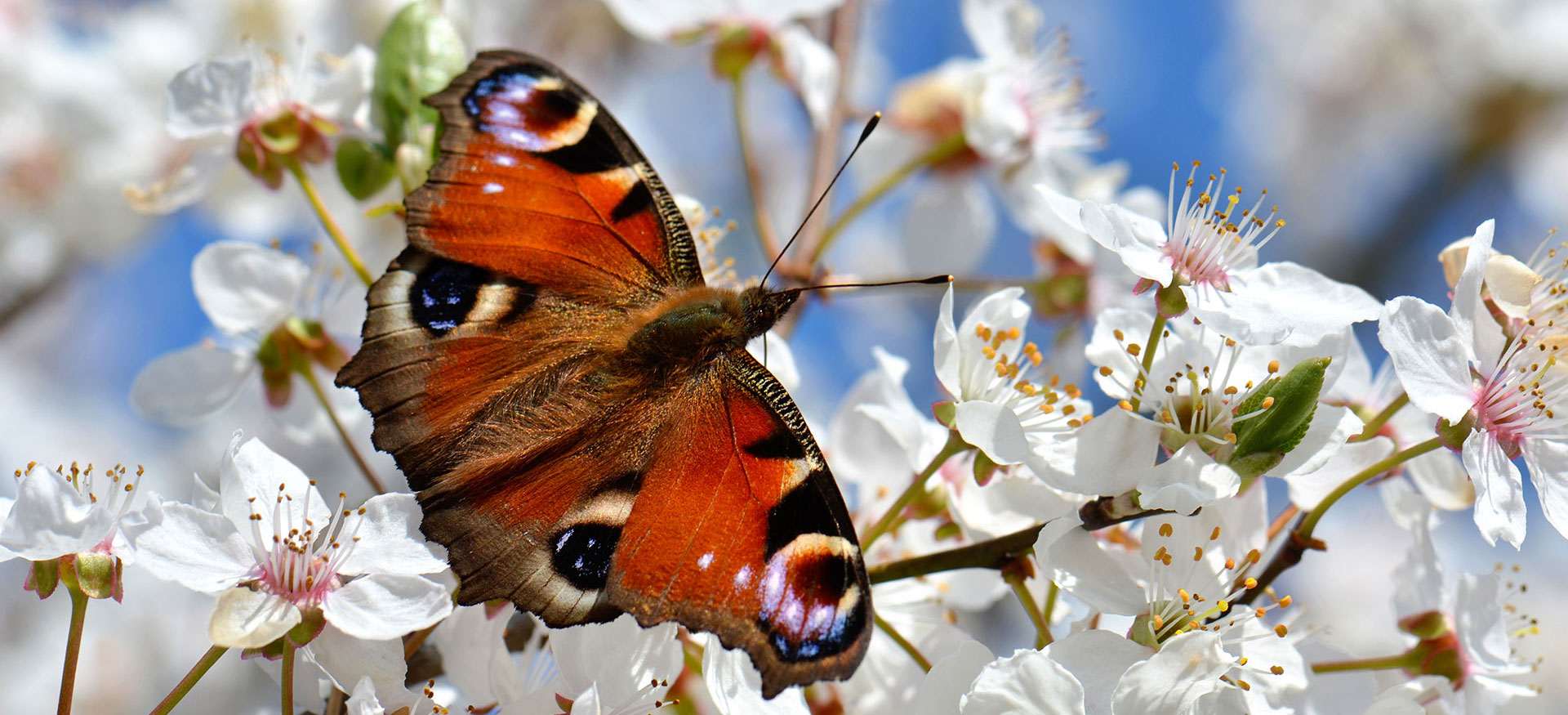
A peacock butterfly, Aglais io, on blossom. This is one of the earliest butterflies you're likely to see in spring, as it hibernates as an adult and starts flying as soon as temperatures warm.
© Violetta Honkisz/Shutterstock.com
Signs of spring
Lisa Hendry
First published 1 March 2019
Springtime can really lift the spirits. From shoots bursting through the soil, to an eruption of animal activity, the sights and sounds of the natural world 'waking up' or starting afresh surround us. The exuberance of nature is contagious.
Here are some favourite signs of spring that Museum British wildlife experts like to look out for.
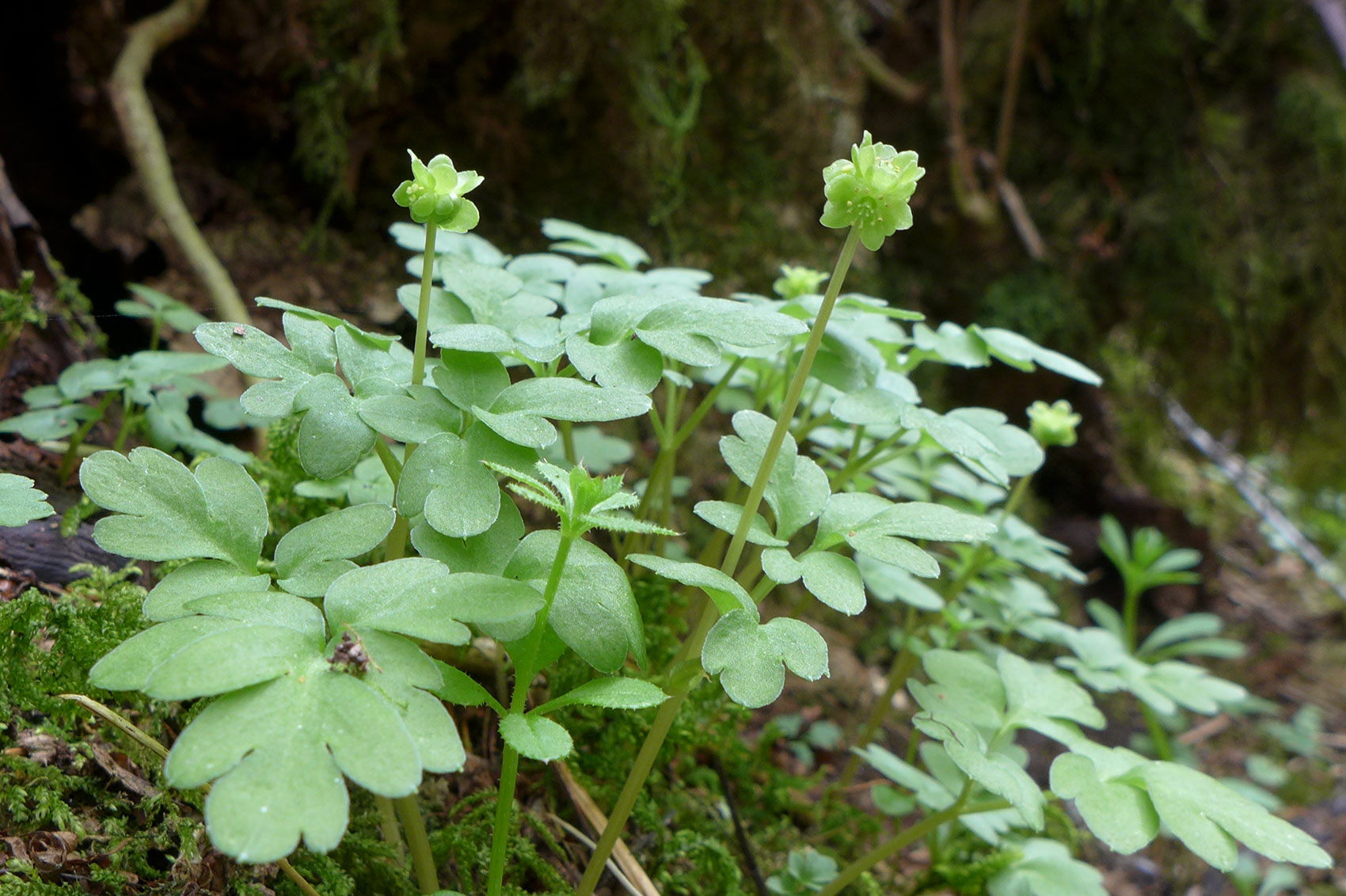
The delicate greenish flowers of townhall clock, Adoxa moschatellina, appear in UK woods in spring.
Image via Dr Helena Crouch
1. Spring woodland flowers
'The first cheery signs of spring can often be found in our woodlands,' says Museum botanist Dr Fred Rumsey. 'Many herbaceous plants rush to flower before the canopy develops and casts them into deep shade.

The name townhall clock alludes to the plant's flower head, which has four sides.
Image © AnRo0002 via Wikimedia Commons, licensed under CC0 1.0
'A particular favourite of mine is townhall clock (Adoxa moschatellina), so named for the four faces of its small greenish flower head.
'This small, delicate-looking plant dies away completely by May or June. Look for it around the base of trees and on banks often at the edges of woods. Its divided leaves look a little like wood anemone, with which it often grows.'
It's on a woodland walk that you'll spot one of the Britain's best-loved spring flowers: the native bluebell, Hyacinthoides non-scripta. The UK is home to about half of the world's bluebell population. Their dainty bells carpet our woods in blue. April to June is the best time to see this spectacle.
2. Blooms, blossom and catkins
There's also much to look out for in gardens, neighbourhood parks or even along local streets.
The familiar bright yellow heads of daffodils bobbing in the breeze brighten lawns and roadside verges, while delicate cherry blossom brings spring to the heart of many towns.
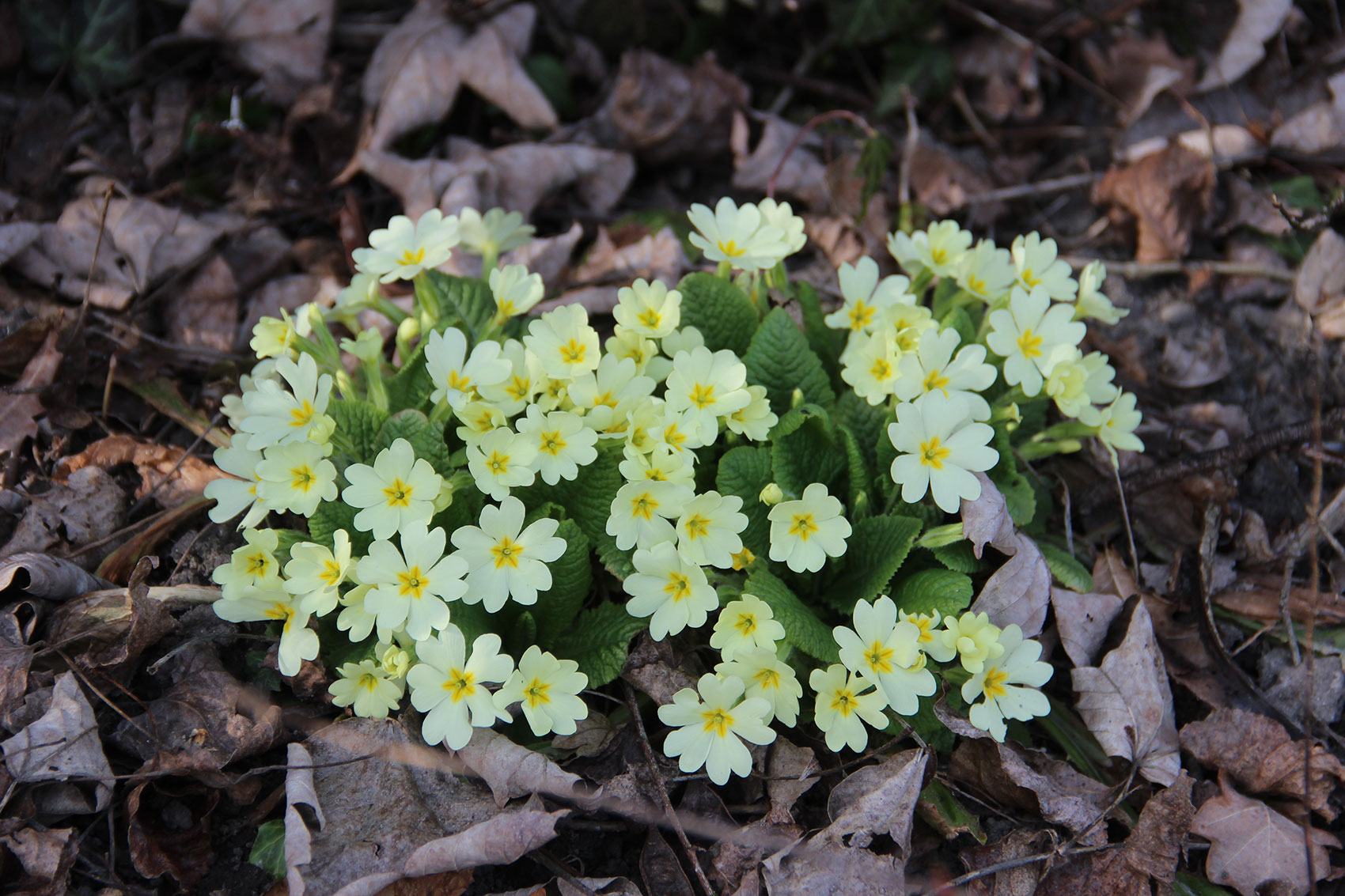
Primroses, Primula vulgaris
Image © Björn S via Wikimedia Commons, licensed under CC BY-SA 3.0
Fred adds, 'Primrose, Primula vulgaris, is a woodlander which can also make spectacular displays on road and railway banks.
'Look from mid-February onwards for the lovely pale yellow flowers. These often now show the influence of garden escapes with reds, purple and mauve shades also present.'
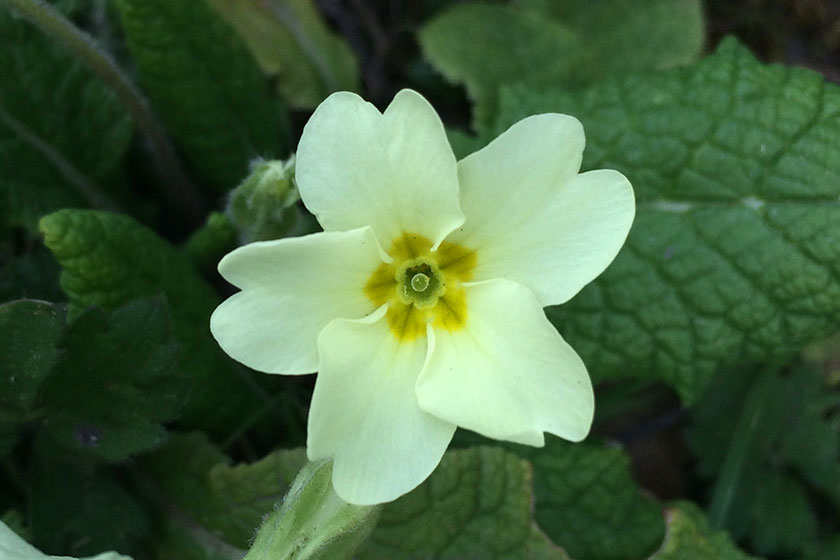
Primula vulgaris has evolved a cunning way of preventing self-fertilisation: two forms of flower that differ in the placement of the pollen producing and receiving structures.
© Fred Rumsey
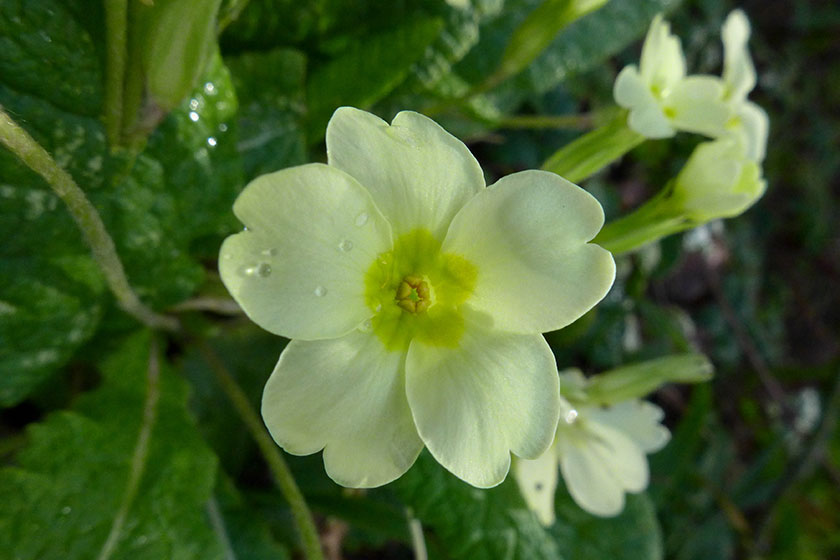
Each primrose plant has only one form of flower, which is genetically determined. The form above is called thrum. The other is called pin.
© Fred Rumsey
'One of the first obvious floral signs of spring is the arrival of the golden tassels of hazel catkins,' says Fred.
'This woody shrub (Corylus avellana) prefers chalky soils and can be seen in hedges, woodlands and by roadsides all over Britain.
'Subtle differences influence when flowering starts, and it is fascinating to see the differences even between very local areas. In mild years some plants may even flower by January the first.'
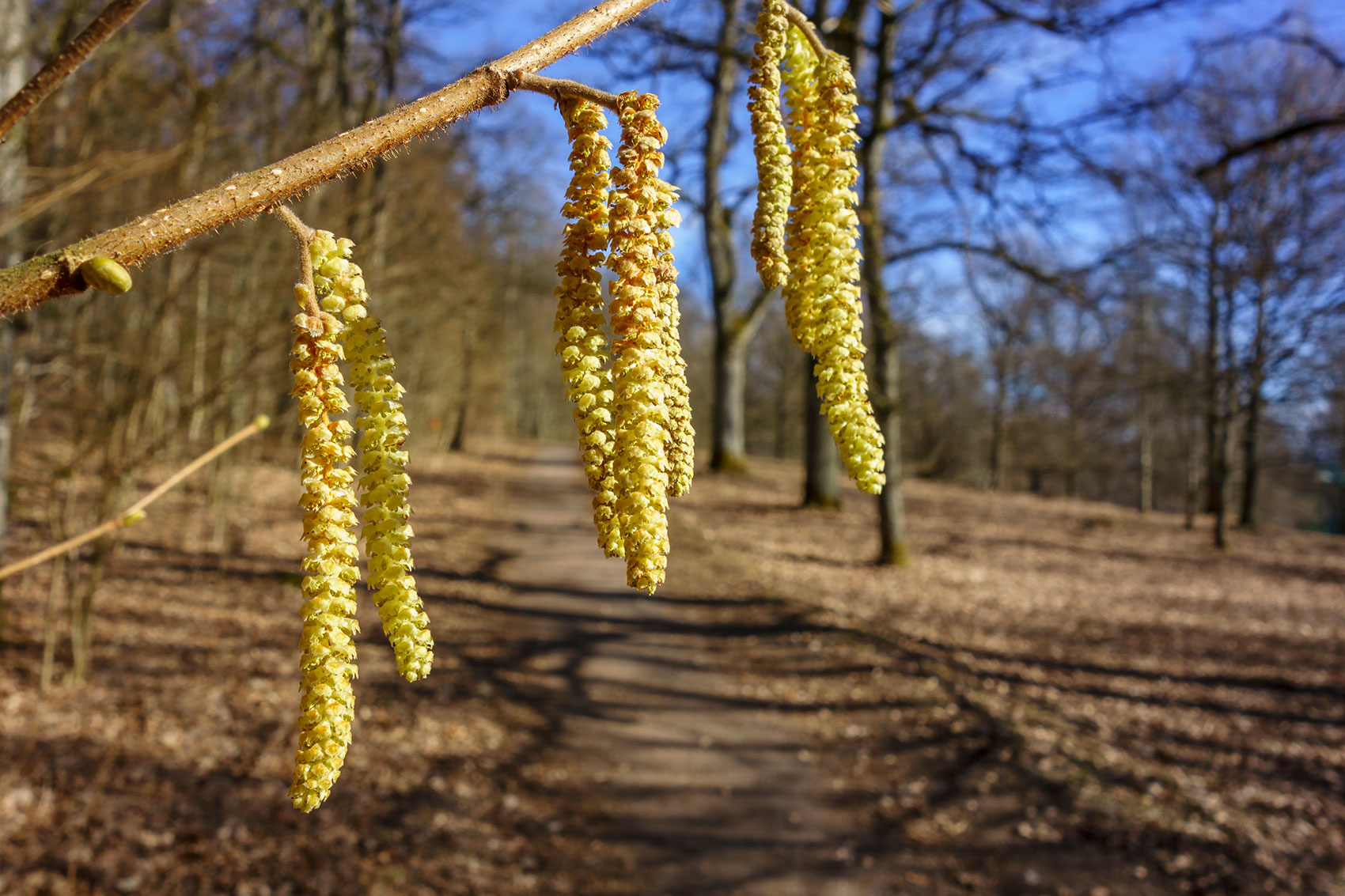
Golden hazel catkins are an early sign of spring
© TTphoto/Shutterstock.com
3. Budburst
Spring is also a time for new shoots, buds and leaves unfurling. This is what catches the attention of Dr Alex Bond, Senior Curator in Charge of Birds.
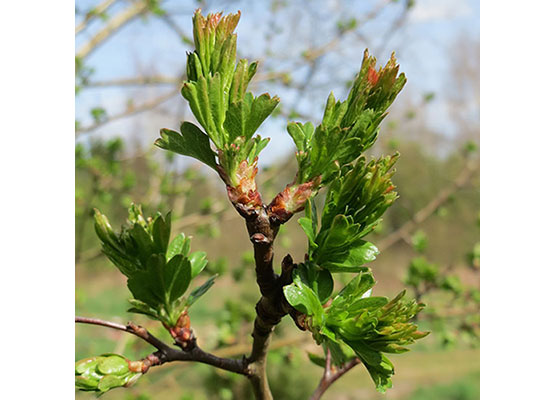
Hawthorn, Crataegus monogyna, leaves unfurling
Image © AnRo0002 via Wikimedia Commons, licensed under CC0
He says, 'My sign of spring is the first buds on the hawthorn in my back garden. It's about three metres tall and is the first of my trees to start budding each year.
'At first the tiny buds look almost like a heavy dew in the morning, but soon the little green leaves will start poking through.'
4. Return of migrant birds
Dr Joanne Cooper, Senior Curator of Birds, must wait a bit longer to see her favourite sign of spring.
She says, 'The most keenly anticipated (even magical) moment of my spring usually comes in mid-April. It's when I hear a distinctive, bright chirruping call and see a bold flicker of black and white dive in over the garden and swoop up to the round mud nests tucked under our cottage's eaves: the house martins are back!'
House martins build their nests using more than 1,000 beak-sized pellets of mud. This can take them around 10 days, although the birds aren't adverse to doing home repairs and reusing old nests.
You can help out these little lodgers by having areas of damp mud in your garden, if you have a nearby building with eaves or an overhang.

House martins, Delichon urbicum, collecting mud to build nests with
© RazvanZinica/Shutterstock.com
House martins fly in from Africa for the summer. Other noteworthy spring arrivals that do the same include wheatears, swallows and cuckoos. Swifts are one of the last summer migrants to arrive.
UK cuckoo numbers have plummeted in recent decades. In an effort to understand why, the British Trust for Ornithology has been satellite-tracking cuckoos since 2011. You can follow cuckoo movements on their website.
Spring is also known for its cacophony of birdsong, as individuals try to attract mates and defend territories.
Resident songbirds such as robins and great tits are among the first to join the dawn chorus from about March. Migrants add their voices once they've flown into the country, making May and June the peak time to listen to the greatest range of songs.
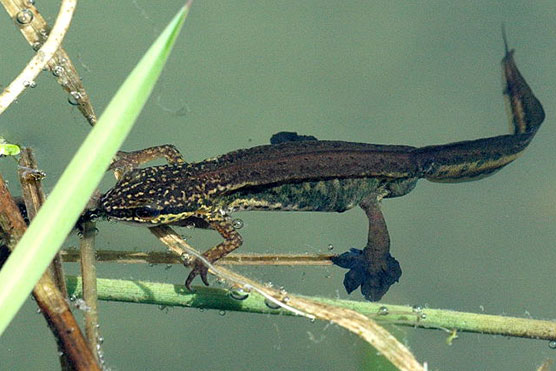
Male palmate newts, Lissotriton helveticus, develop large, webbed hind feet during breeding season
Image © James Lindsey at Ecology of Commanster via Wikimedia Commons, licensed under CC BY-SA 2.5
5. Newt nooky
Telltale early signs of spring can be spotted in your local pond.
Steph West, the Museum's UK Biodiversity Training Manager, says:
'When people think of ponds in spring, seeing frogspawn may be the first thing that comes to mind, but these are not the only amphibians using ponds at this time of year.
'Our three native newt species will have spent the winter tucked away in hibernacula, perhaps old log piles or rocks. Come spring, though, there is only one thing on their minds - although newts spend most of their lives hunting on land, they mate and lay their eggs in ponds.
'In male newts, spring prompts the production of extravagant physical features such as crests, huge tails with bright silver flashes and, in the case of the palmate newt, gigantic back feet. Meanwhile the females will be searching for the perfect leaf to safely wrap their individually laid eggs.'
Toads also often wrap their spawn in submerged vegetation, but they lay it in long strings. Frogspawn is what you see in clumps.
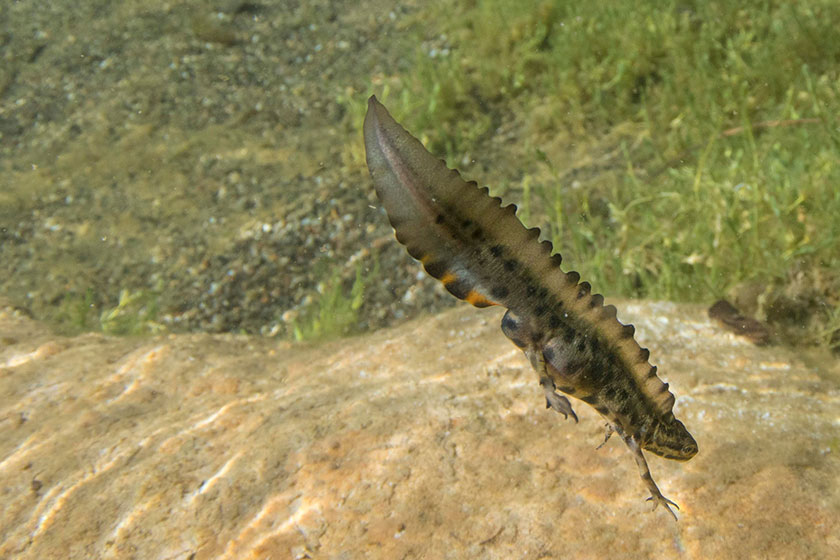
A male smooth newt, Lissotriton vulgaris, showing the wavy crest present in springtime
© Jack Perks/Shutterstock.com

Newts lay individual eggs and wrap them in leaves. These are eggs of the great crested newt, Triturus cristatus, a protected species.
Image © Erik Paterson via Flickr, licensed under CC BY 2.0
6. A buzz in the air
Dr Paul Williams, a Museum entomologist who researches bumblebee evolution and conservation, says:
'For me spring is a time when the air once again starts to fill with the happy hum of emerging queen bumblebees.
'Walking down my street this morning I saw queens and workers of our familiar Bombus terrestris already busy on the Mahonia bushes.
'In much of England this bee now has active nests throughout the winter. By the end of March, all six bee species common in mature gardens across London will be active.'
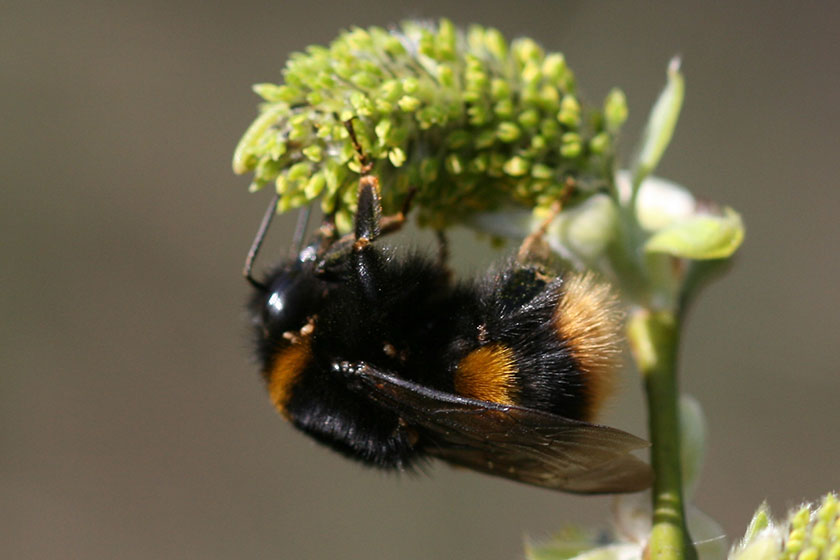
Bombus terrestris queen bumblebees are active very early in spring, if not before
Image © S Rae via Wikimedia Commons, licensed under CC BY 2.0
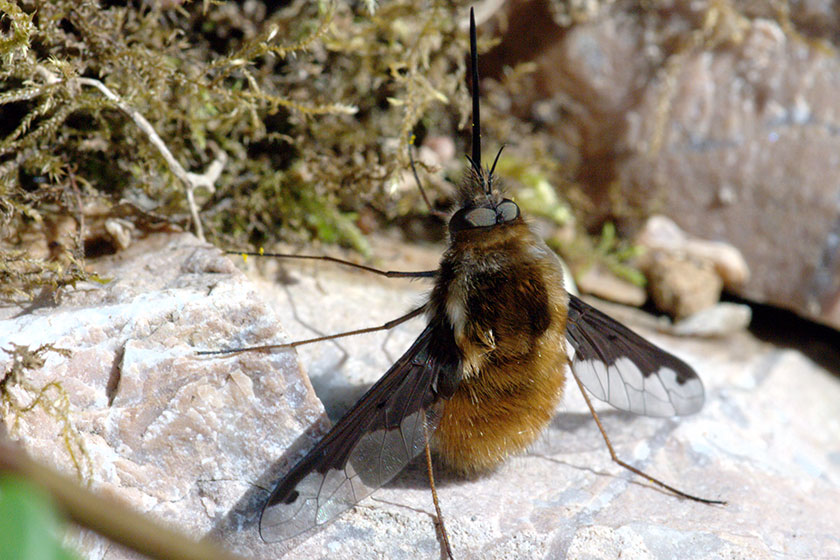
Also active in early spring is Bombylius major. It may look a bit like a fluffy bee, but it's actually a fly.
Image © hamon jp via Wikimedia Commons, licensed under CC BY-SA 3.0
Bees aren't the only insects starting to fill the air.
Dr Erica McAlister, Senior Curator for Diptera, highlights a fly that can cause confusion and intrigue due to its appearance: a sort of cross between a bee and a giant mosquito.
She says, 'One the earliest of the flies to spring into action, in March, is the dark-edged bee-fly, Bombylius major. With their fluffy bodies and long mouthparts, they are very distinctive.
'Watch for them throwing their eggs near the nests of mining bees (the host for the larva).'
7. A bevy of beetles and butterflies
Geoff Martin, the Museum's Senior Curator in Charge of Lepidoptera, enjoys early sightings of brimstones, peacocks, small tortoiseshells, red admirals and commas - all butterfly species that hibernate as adults - on the odd day when the temperature is high enough. But it is another two species that signify spring for him.
'I really look forward to seeing orange-tips and holly blues, which signal that spring has truly arrived,' he says. 'These are two of the first butterfly species to emerge that haven't overwintered as adults, having instead spent winter as chrysalises. Both often visit gardens, but the holly blue does so most frequently. It may even breed in your garden as it uses holly and ivy as a larval hostplant.'

Male orange-tip, Anthocharis cardamines, on a cuckoo flower
Image © jeannie debs via Flickr, licensed under CC BY 2.0
It only needs a few sunny days to tempt the first beetles out of hibernation, according to Max Barclay, Senior Curator in Charge of Coleoptera:
'On a warm afternoon in late winter, the "aerial plankton" of small flying beetles such as rove beetles and ladybirds can be strikingly diverse, picked out by the setting Sun.
'Some of the first beetles to emerge for the new season are flightless. The large, glossy-black oil beetles (genus Meloe) and bloody-nosed beetles (genus Timarcha) can be found lumbering along coastal footpaths or chalky hillsides from the end of February.
'Both have a chemical defence which allows them to be so slow and seemingly helpless. Oil beetles secrete the blistering poison cantharidin, while bloody-nosed beetles produce a blood-like substance from their mouths, giving a potential predator the impression of having been wounded!
'Both are in fact harmless to humans and are a treat to see on a country walk, as they show the habitats are in good health, and remind us of warmer weather to come.'
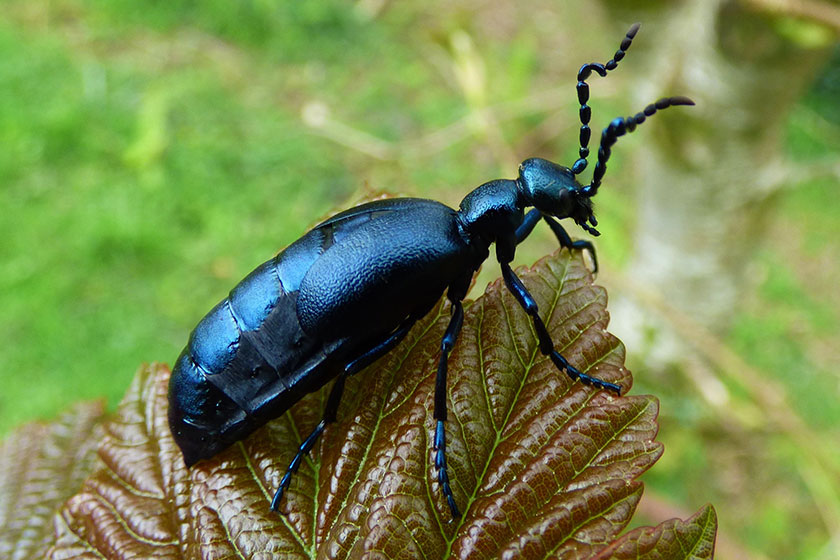
Numbers of the UK's native oil beetles have decreased over the past century due to changes in the way our countryside is managed. The beetles are associated with wildflower-rich habitats. Adults are active in spring.
Image © Mark Coleman via Flickr, licensed under CC BY-SA 2.0
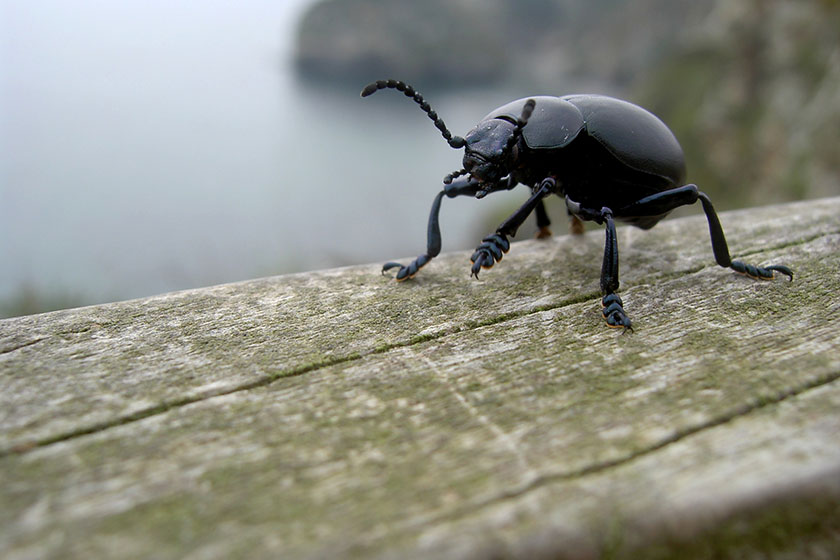
Bloody-nosed beetles have a rather lumbering walk. If they feel threatened they exude a foul-tasting, ruby red fluid to deter predators. Neither they nor oil beetles can fly.
Image via Pixabay, public domain
8. Bats feasting after their fast
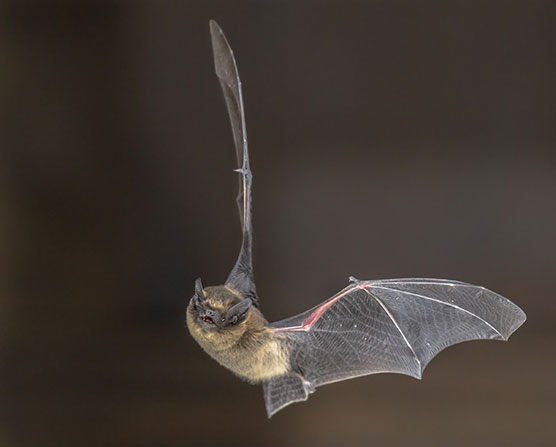
A pipistrelle bat in flight. Eighteen bat species live wild in the UK.
© Rudmer Zwerver/Shutterstock.com
The increasing abundance of insects in the spring is appreciated by many larger animals that dine on them.
Steph is very fond of one such group.
'The first bats flying about are true heralds of spring,' she says. 'Most UK bat species have spent the winter in hibernation, tucked away in places like caves to escape the harsh winter weather and survive through months of little available prey.
'By spring they have used up their fat reserves and are hungry - particularly the pregnant females as mating season was in autumn - so you can see them out and about on any warm evening, hoovering up any available insects they can find.
'Keep an eye out over lakes, ponds and rivers on warm evenings and you might spot a bat gleaning insects over the water.'
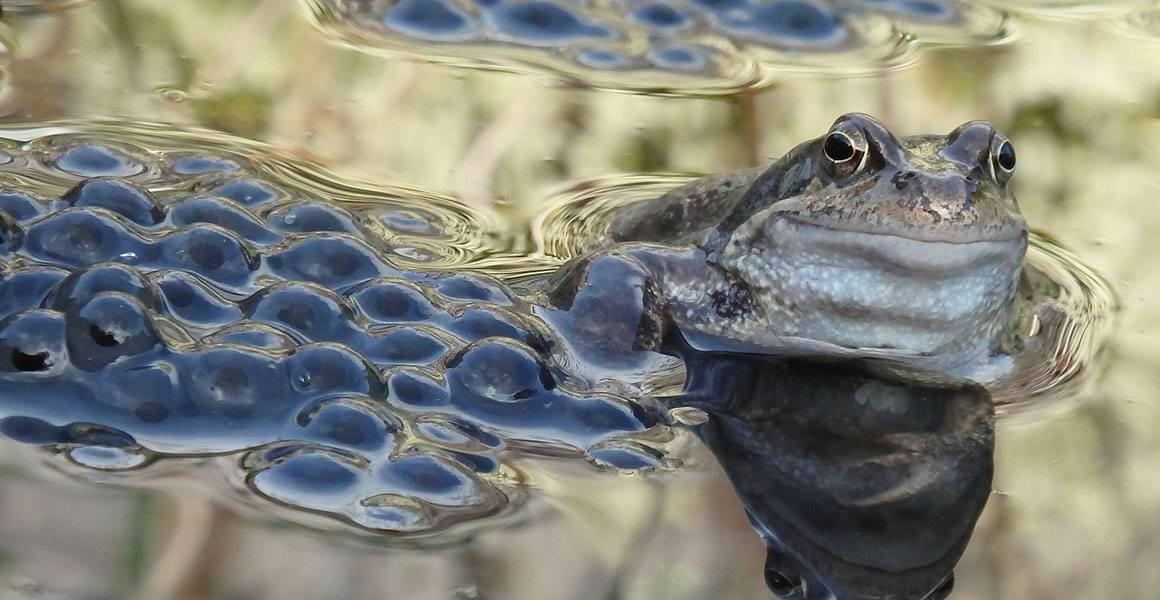
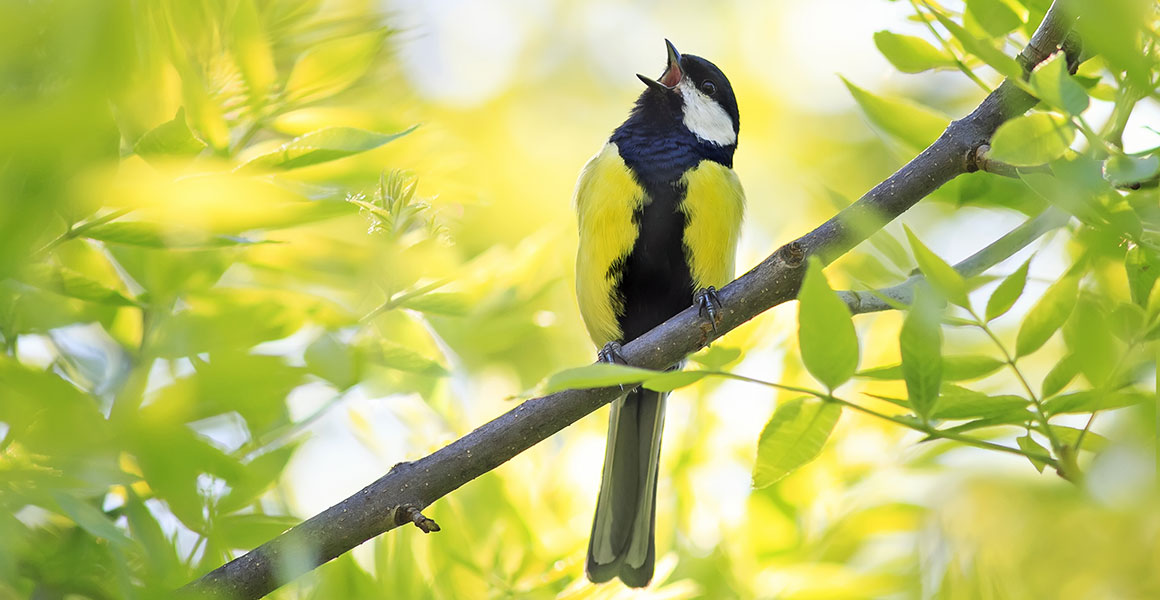


Don't miss a thing
Receive email updates about our news, science, exhibitions, events, products, services and fundraising activities. We may occasionally include third-party content from our corporate partners and other museums. We will not share your personal details with these third parties. You must be over the age of 13. Privacy notice.
Follow us on social media